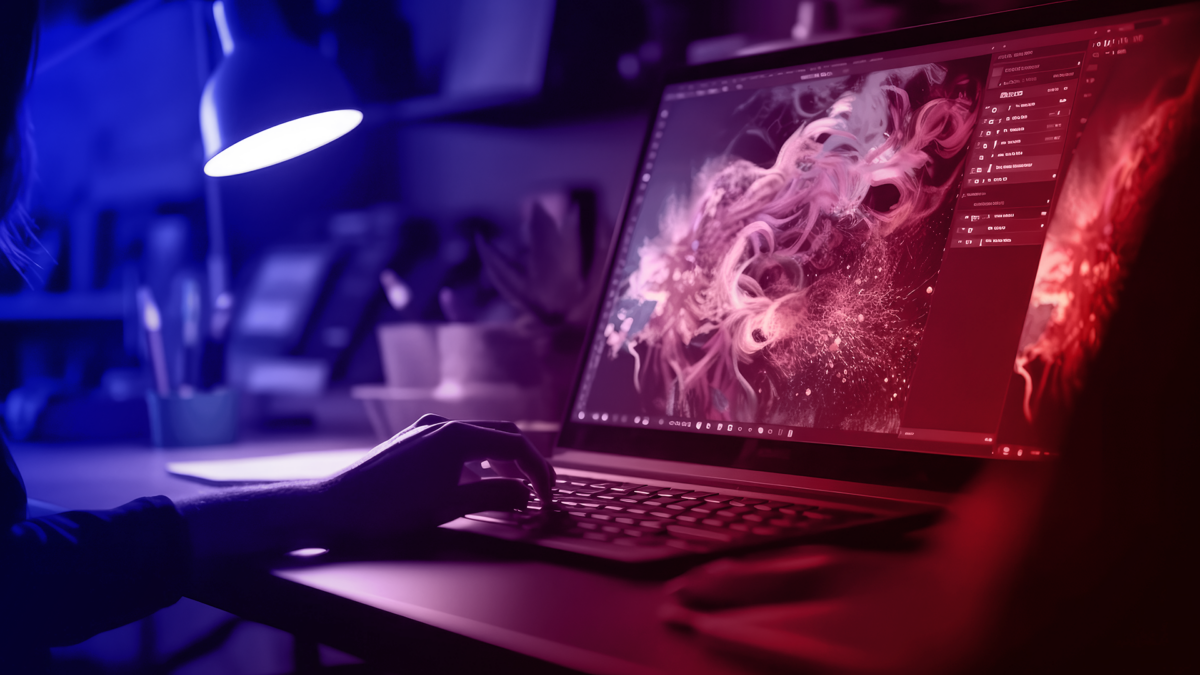Generative AI: Revolutionary – including for the design process?
One of the topics that EVERYONE is talking about in the creative world is how technology can enhance people's artistic skills and abilities. Read on to learn how the creative industry is already using generative AI in a variety of ways.

What is generative AI?
Generative artificial intelligence (AI) is a technology that uses generative models and is revolutionizing how we think about creative expression and efficient problem-solving. Computers are trained using comprehensive datasets and can generate fresh data that mimics the patterns the computers have learned. That means that generative AI can create completely original text, images and even music.
One of the most exciting aspects of generative AI is its potential for use in creative applications. It can be used to create unique, appealing content for social media, advertising, websites, and other digital platforms, for example, but it can also help artists and designers to create new and innovative works that push the boundaries of conventional art forms.
Its range of potential applications is huge, from creating extraordinary art and music through to optimizing business processes and efficiency. In other words, generative AI can also be utilized in commerce and industry, including in marketing and communications, where it is already widespread. Customer data can be analyzed to identify patterns and develop product designs that are more likely to be successful. AI is also being used to help companies automate specific tasks and processes, boosting efficiency and reducing costs.
Another area where AI can make life easier is designing interactive elements. By analyzing user behavior and preferences, it can generate customized content and thus optimize the user experience, making a particular website or application more popular with users and encouraging them to visit more frequently.
Adding AI to the design process: Does it expand creative boundaries?
Generative AI tools are currently in great demand in the design industry, where applications including Adobe Firefly, Midjourney, and ChatGPT are already an essential part of the creative process for many designers. Their primary advantage is saving time, but AI tools can do much more than that, from creating unique images and text through to making it easy to analyze data and user behavior in order to generate personalized designs, and even suggesting specific corrections to improve the results.
AI can automate repetitive tasks, freeing up creatives to fully focus on their individual creativity – which is, after all, what their job is actually about.
The fashion industry, and digital fashion in particular, is a real-life example of this. Designers use AI to assess fashion trends and understand individual customer preferences, which then helps them to design exclusive and appealing garments. AI can even help them select the right materials and colors to create a coherent, harmonious design.
Generative AI in design: Can AI replace human creativity?
As well as its potential benefits, using generative AI also raises issues in relation to its impact on creativity in the industry. One concern is that content generated by AI may not have the same level of creativity and emotional depth as content created by human artists. Another is that AI could lead to automation in the creative industry, driving out human employees and threatening jobs.
Despite all the concerns, however, many people in the industry view AI as a valuable tool for boosting efficiency. The ongoing (r)evolution and improvement of AI is also increasing its ability to help us create new and fascinating content – and thus to reach a level of creativity that we might never have believed possible.
Using AI in the design process and the question of ethics
Blending AI and design raises some ethical considerations. What measures can be taken to prevent AI from being biased or generating discriminatory content and designs? How can copyrights be addressed when using AI in the design process? Issues like these are highly significant and the industry must handle them sincerely and carefully.
The ethical aspect of using AI in the design process includes the responsibility for ensuring that the AI tools in question respect society’s values and standards. These tools must be designed and implemented so that they both optimize creative content and safeguard the wellbeing of users.
Consequently, designers are also required to be respectful in terms of users and society as a whole when they use AI in the design process. This applies particularly to issues such as: What AI content can and should be used? How and where should it be used? Could an AI-generated design be intentionally or unintentionally distorted or even completely misappropriated?
Deepfakes in the form of AI-generated images or videos of prominent people, for example, are currently a major trend on social media – frequently in an (allegedly) humorous context. However, users frequently struggle to distinguish between deepfakes and reality – and sometimes even the experts are unable to do so. From here, it’s just a short step to things like content deliberately placed in the wrong context and misuse for the purpose of shaping opinions. And even a funny image or video can have serious consequences.
Establishing guidelines for responsible use of AI in design is therefore of paramount importance. To that end, the European Union’s AI Act will come into force next year, with the specific aim of creating a legal framework for developing, deploying, and using AI systems in the EU.
Generative AI in creative industries: The future is bright!
Adding AI to the design process has opened up an unprecedented era of innovation and efficiency – especially because it is fundamentally changing how creatives work. Generative AI tools have become essential resources, from creating the concept through to optimizing the design, streamlining tasks, and enabling designers to expand their powers of imagination and creation.
Creative automation is extremely useful for repetitive process steps, while AI itself provides valuable insights and gives designers space to focus on the demanding aspects of their projects. As AI continues to evolve, its role in the design process will grow, the creative field will expand and, more than ever, it will contribute to the spirit of innovation throughout.
A balanced, well-thought-out combination of AI and human creativity promises to deliver significant breakthroughs in the design industry – and will reshape the future of design into something new and exciting.





